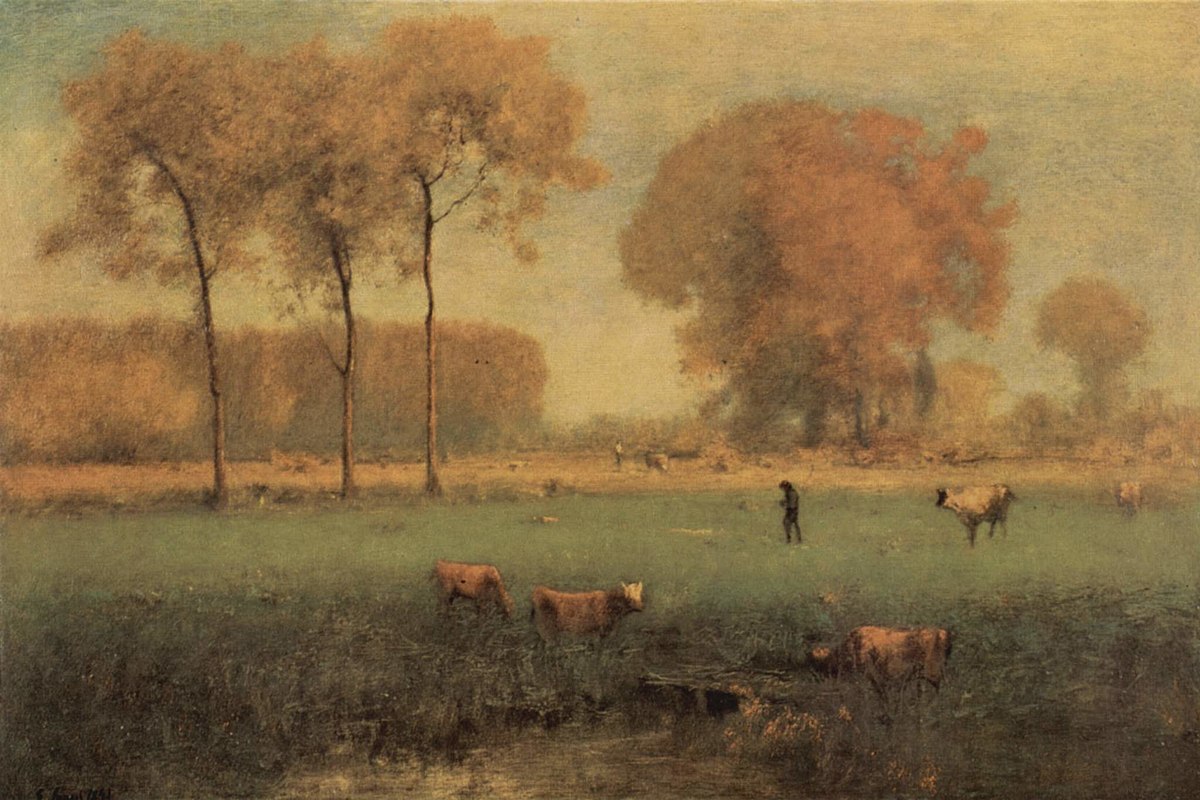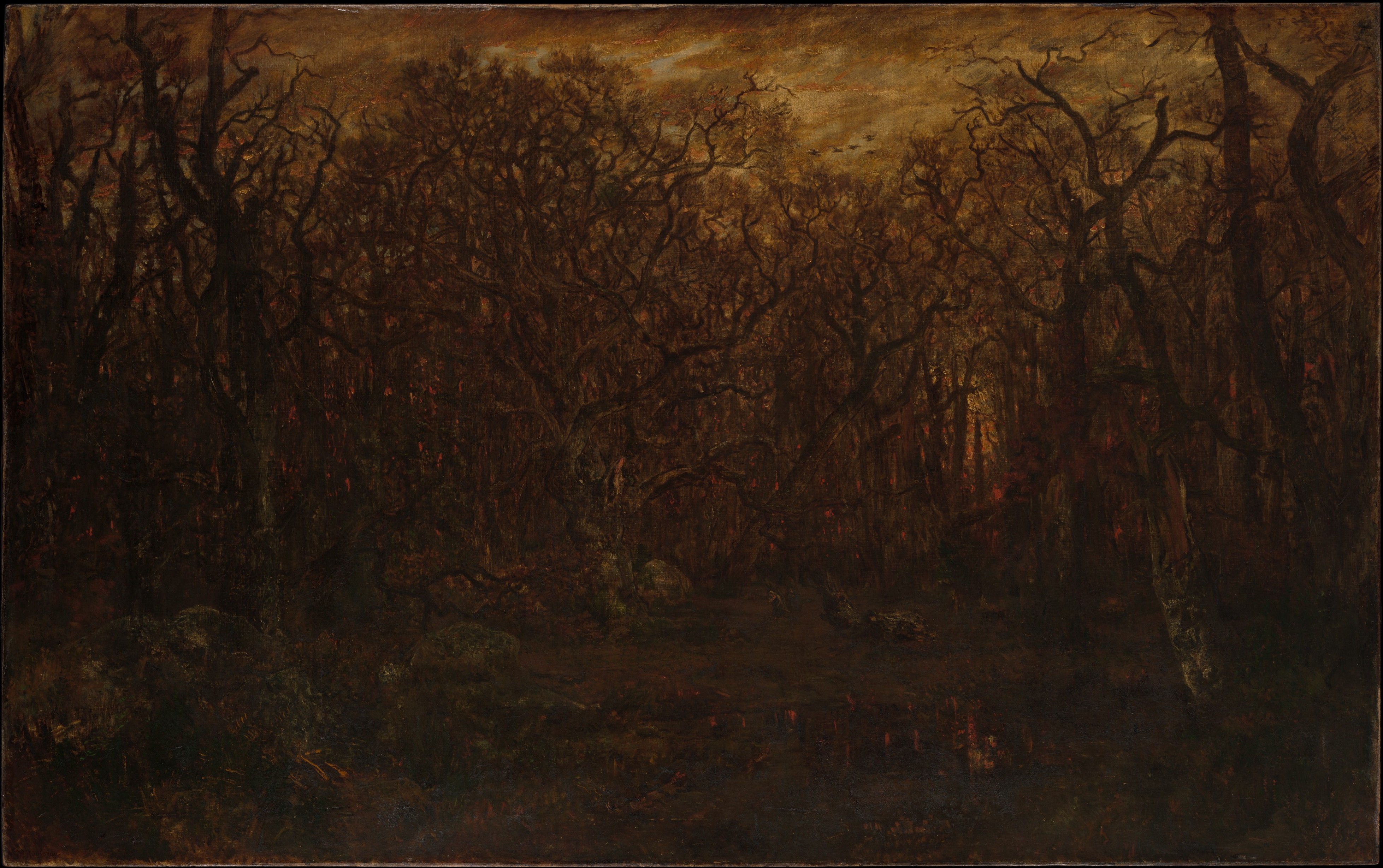The Barbizon School: A Gentle Revolution in Landscape Art

A quiet revolution was occurring in the rural center of France during the first half of the 1800s. In contrast to Paris's elaborate salons and neoclassical ideals, a group of artists started painting nature as they perceived it: unvarnished, flawed, and profoundly poetic. Because of the small settlement of Barbizon, which is located on the outskirts of the Fontainebleau Forest, this movement would eventually be known as the Barbizon School.
The artists of Barbizon played a significant role in creating the foundation for modern art, although frequently being eclipsed by the subsequent genius of the French Impressionists. Their rejection of academic limitations, dedication to realism, and strong connection to nature would have an impact on future generations.
Historical Context: Romanticism and Realism
It is necessary to comprehend the artistic climate of early 19th-century Europe in order to appreciate the rise of the Barbizon School. Early in the 19th century, the Romantic movement predominated due to its emphasis on emotion and the majestic qualities of nature. Art academies typically featured paintings of heroic mythology, spectacular battles, and idealized landscapes.
However, as industrialization changed the social structure and geography of Europe, some painters started to focus on more straightforward, grounded issues both inner and outward. For the Barbizon artists, this turn toward Realism—the truthful and unvarnished portrayal of ordinary life—provided the intellectual underpinning.
The Birth of the Barbizon School
It is necessary to comprehend the artistic climate of early 19th-century Europe in order to appreciate the rise of the Barbizon School. Early in the 19th century, the Romantic movement predominated due to its emphasis on emotion and the majestic qualities of nature. Art academies typically featured paintings of heroic mythology, spectacular battles, and idealized landscapes.
However, as industrialization changed the social structure and geography of Europe, some painters started to focus on more straightforward, grounded issues both inner and outward. For the Barbizon artists, this turn toward Realism—the truthful and unvarnished portrayal of ordinary life—provided the intellectual underpinning.
Key Artists and Their Contributions
Jean-Baptiste-Camille Corot (1796–1875)
Corot did not live in Barbizon permanently, but the movement was greatly impacted by his lyrical landscape paintings. Modern landscape painting and classical traditions were connected by his nuanced use of light and form. His creations, like "Morning: Dance of the Nymphs," frequently have hazy settings and an understated respect for the natural world.
Morning: Dance of the Nymphs, 1850 - Camille Corot
Theodore Rousseau (1812–1867)
As one of the first people to live in the area, Rousseau is frequently regarded as the spiritual leader of the Barbizon School. The majesty and sorrow of unspoiled forests are highlighted in his landscape paintings, such as "The Forest in Winter at Sunset," which are rich in texture and tone. Despite commercial pressure, he persisted in his goal of depicting the "majesty of trees."

The Forest in Winter at Sunset,64 x 102 3/8 in. (162.6 x 260 cm), Oil on canvas by Théodore Rousseau (French, Paris 1812–1867 Barbizon)
Jean-Francois Millet (1814–1875)
Millet brought a human dimension to the Barbizon School. His focus was not only on the land but also on the people who toiled upon it. Paintings like "The Gleaners" and "The Angelus" highlight the dignity of rural labor, often infused with spiritual overtones. Though initially criticized for glorifying peasant life, Millet is now recognized as a pioneering social realist.

The Gleaners, in 1857, oil on canvas by Jean-Francois Millet
Charles-Francois Daubigny (1817–1878)
Daubigny helped to create a more fluid and impromptu style of landscape painting. He was ahead of the Impressionists in his use of color and brush technique. He frequently painted from a riverboat, capturing the shifting effects of light with a looseness that was groundbreaking at the time.
The Seine: Morning,15 1/4 x 27 1/4 in. (38.7 x 69.2 cm), 1874 Oil on wood by Charles-François Daubigny
Narcisse Virgilio Diaz de la Pena (1807–1876)
The forest settings were given color and drama by Díaz, who is well-known for his vivid color scheme and romanticized woodland scenes. His creations infused the Barbizon style with a sensual, almost supernatural character.

A Clearing in the Forest,1869 oil on panel by Narcisse Virgilio Diaz de la Pena
Artistic Characteristics
Barbizon School is characterized by a number of unique features:
Naturalism: An accurate, unadorned portrayal of the natural world."
Tonalism is the use of a muted, earthy color scheme to create an atmosphere.
A respect for rural life, trees, seasons, and the rhythms of the countryside is known as empathy with the land.
Plein air painting is the practice of painting outside while capturing the light and ambiance as it occurs.
Rejection of Idealism: Barbizon's paintings welcomed irregularity and the wildness of nature, in contrast to classical landscapes that were created in the studio with flawless symmetry.
Influence on Impressionism and Beyond
An important transitional role between the Impressionist and Romantic movements was played by the Barbizon painters. Younger artists like Claude Monet, Pierre-Auguste Renoir, and Alfred Sisley were directly impacted by their outdoor paintings, which emphasized natural light and commonplace objects. Indeed, Rousseau and Corot were once cited by Monet as important sources of inspiration.
Their focus on atmosphere, emotion, and individual vision was also reflected in the Symbolists' and Vincent van Gogh's final paintings.
Legacy
One of the most significant artistic societies in 19th-century Europe was established by the Barbizon artists, despite the fact that they never established an official academy. Their creations contributed to the change in artistic emphasis from mythological grandeur to the unsung heroism of everyday life.
Their works can now be found in prestigious museums all over the world, such as the Metropolitan Museum of Art, the Muse d'Orsay, and the Louvre. The studios, galleries, and walking trails that formerly served as inspiration for these trailblazing painters have been preserved, making Barbizon a popular destination for art enthusiasts.
Conclusion
A movement founded on a profound regard for both environment and people, the Barbizon School was more than just a collection of landscape artists. These artists opted to be silent in a period of fast change. Their goal was to comprehend and respect the land, the light, and the lives of people who were confined by it. Despite their silent revolution's lack of a yell, its effects are still felt today, influencing how we perceive and depict the world.
Join our classes to enhance & improve your memory skills and let your child unlock the power to retain information from every moment of his/her life!
